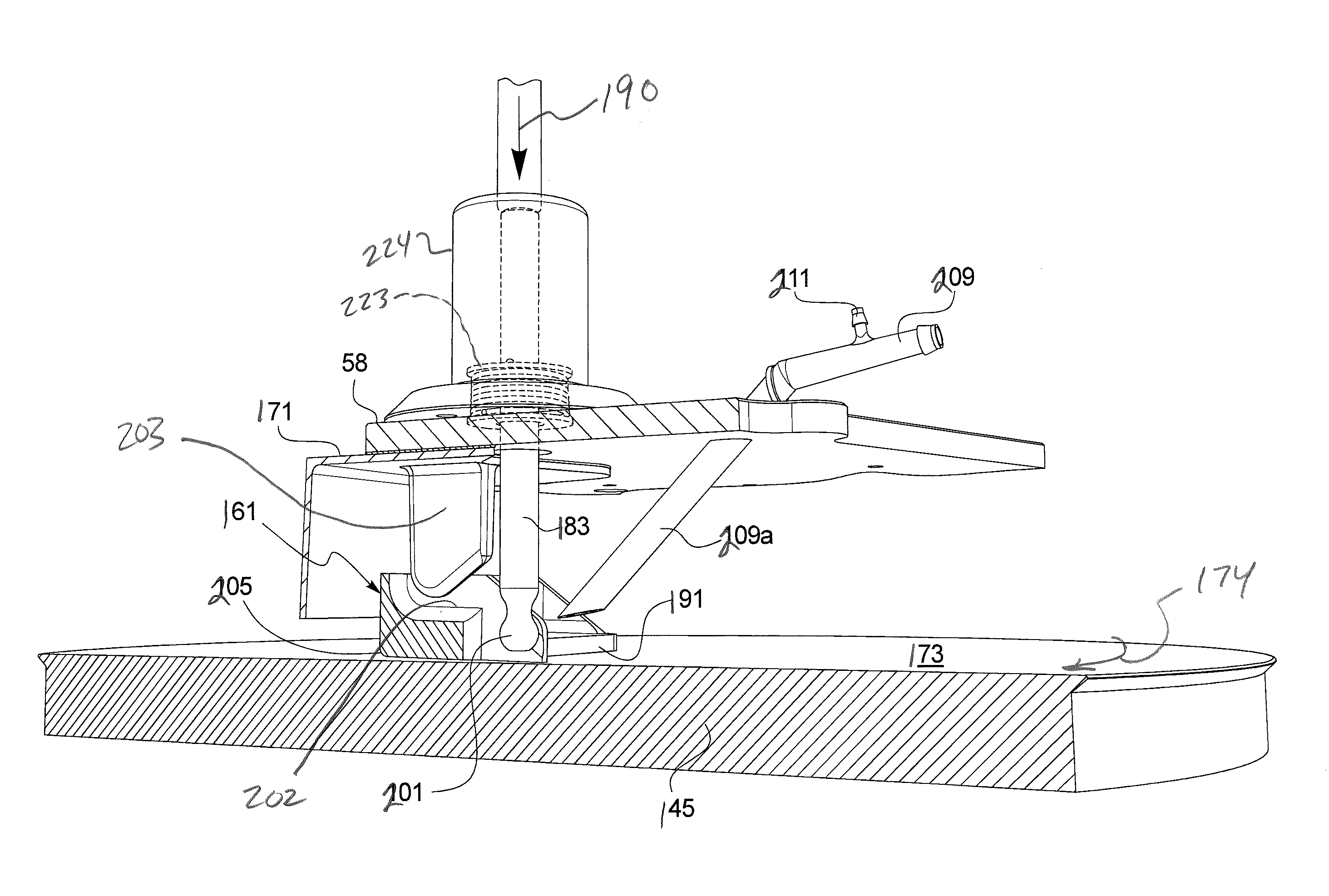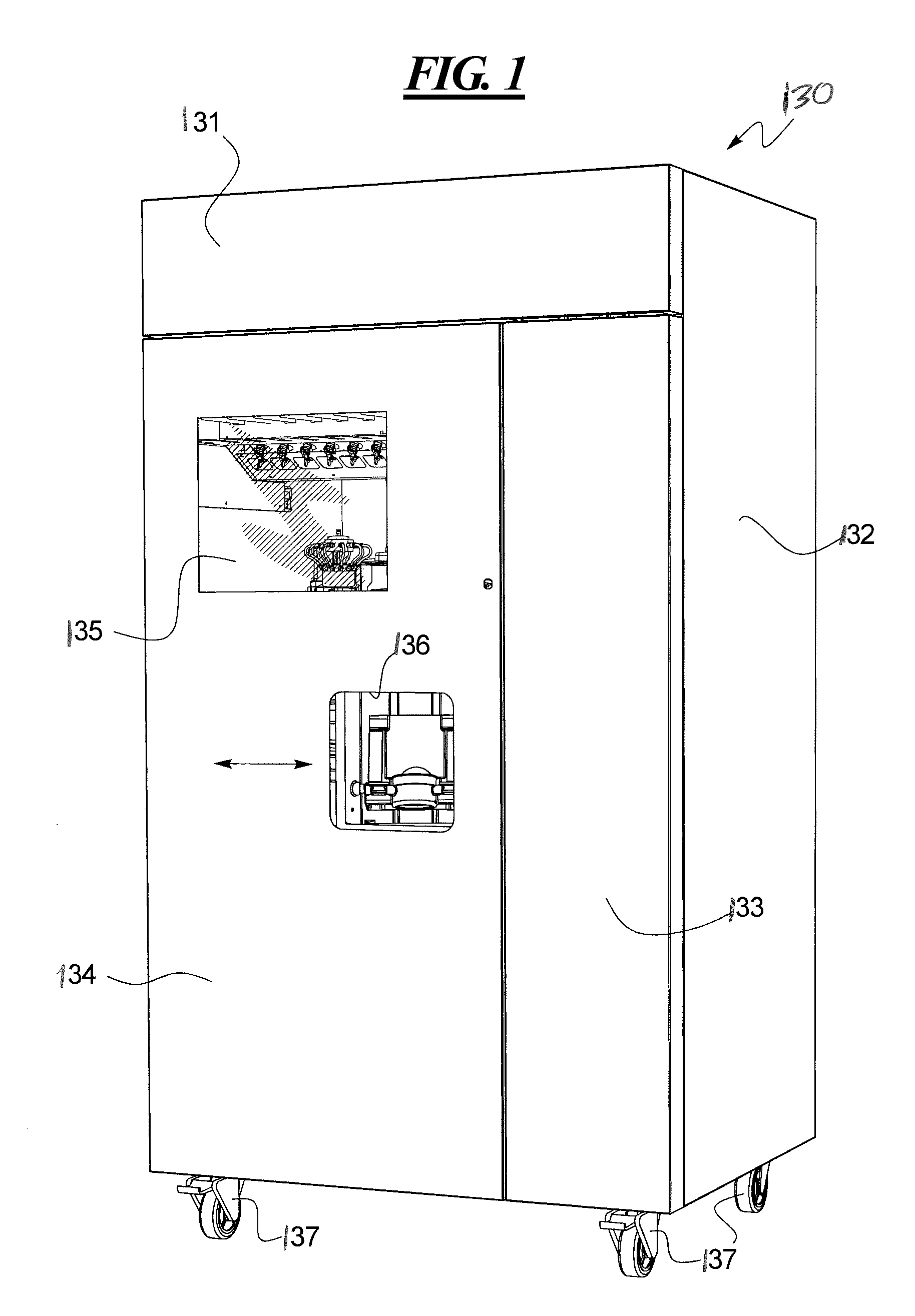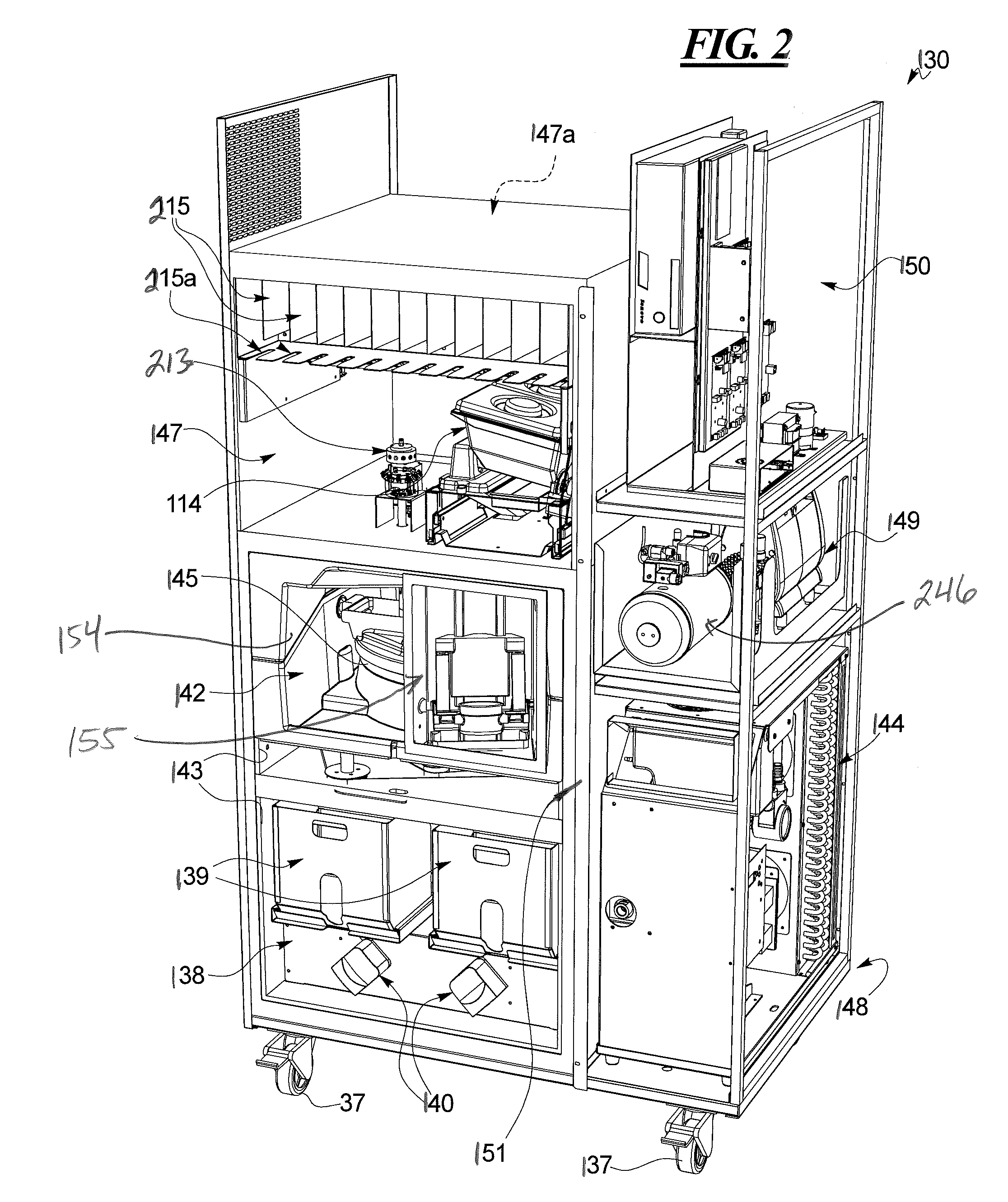Point of sale method and apparatus for making and dispensing aerated frozen food products
a technology of aerated frozen food and point of sale, which is applied in the direction of lighting and heating equipment, applications, instruments, etc., can solve the problems of increasing the labor cost associated with sanitizing each machine, affecting the quality of soft serve products, and many smaller businesses cannot afford the cost or labor associated with additional machines or do not have the floor space required for additional machines. , to achieve the effect of reducing the humidity of chilled air exchang
- Summary
- Abstract
- Description
- Claims
- Application Information
AI Technical Summary
Benefits of technology
Problems solved by technology
Method used
Image
Examples
Embodiment Construction
[0103]Turning first to FIG. 1, a stand-alone ice cream / frozen yogurt fabricating and dispensing machine 130 is illustrated and that is designed for a retail setting. The machine 130 includes outer panels 131-134 as shown in FIG. 1 which cover a skeleton frame structure as illustrated in FIG. 2. The panel 134 serves as a door with an operations viewing window 135 and a sliding access door / window 136 which provides either automated or manual access to the cup-lifter / serving dispenser mechanism 155 as described below. Wheels 137 may be provided to facilitate installation and movement of the machine 130 and for cleaning the floor beneath the machine 130. The daily maintenance / sanitization practices will be described below in connection with FIGS. 27-28 and 46-49.
[0104]FIG. 2 illustrates the skeleton frame and modular structure of the dispenser 130. A lower compartment or module 138 accommodates base containers 139 and pumps 140 used to deliver base to the product fabrication module or “...
PUM
 Login to View More
Login to View More Abstract
Description
Claims
Application Information
 Login to View More
Login to View More - R&D
- Intellectual Property
- Life Sciences
- Materials
- Tech Scout
- Unparalleled Data Quality
- Higher Quality Content
- 60% Fewer Hallucinations
Browse by: Latest US Patents, China's latest patents, Technical Efficacy Thesaurus, Application Domain, Technology Topic, Popular Technical Reports.
© 2025 PatSnap. All rights reserved.Legal|Privacy policy|Modern Slavery Act Transparency Statement|Sitemap|About US| Contact US: help@patsnap.com



